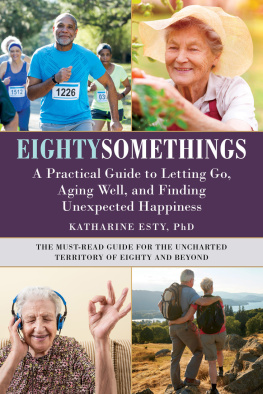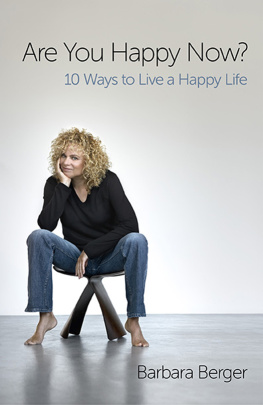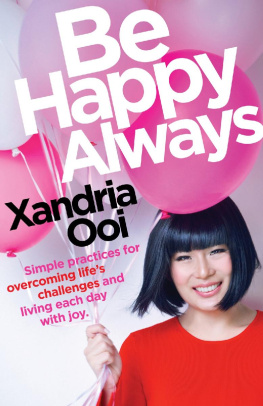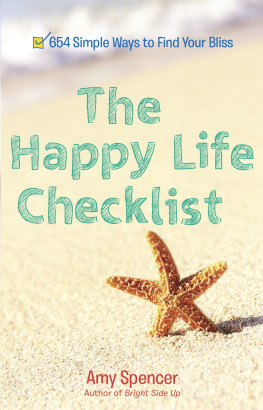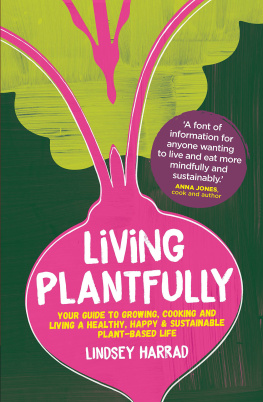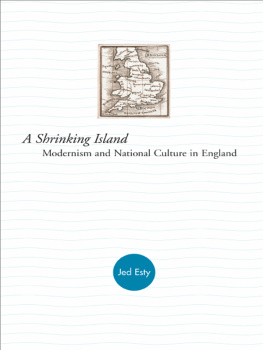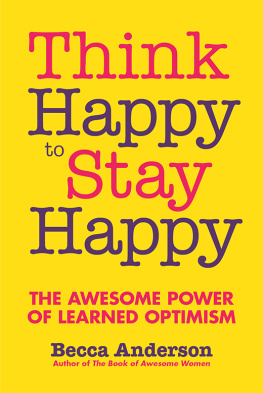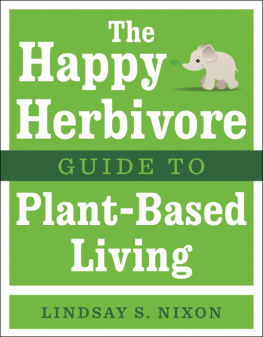

Copyright 2019 by Katharine Esty
All rights reserved. No part of this book may be reproduced in any manner without the express written consent of the publisher, except in the case of brief excerpts in critical reviews or articles. All inquiries should be addressed to Skyhorse Publishing, 307 West 36th Street, 11th Floor, New York, NY 10018.
Skyhorse Publishing books may be purchased in bulk at special discounts for sales promotion, corporate gifts, fund-raising, or educational purposes. Special editions can also be created to specifications. For details, contact the Special Sales Department, Skyhorse Publishing, 307 W est 36th Street, 11th Floor, New York, NY 10018 or .
Skyhorse and Skyhorse Publishing are registered trademarks of Skyhorse Publishing, Inc., a Delaware corporation.
Visit our website at www.skyhorsepublishing.com .
10 9 8 7 6 5 4 3 2 1
Library of Congress Cataloging-in-Publication Data is available on file.
Cover design by Paul Qualcom
Print ISBN: 978-1-5107-4312-0
Ebook ISBN: 978-1-5107-4319-9
Printed in the United States of America
CONTENTS
INTRODUCTION
Each ten years of a life has its own fortune, its own hopes, its own desires.
G OETHE
F or many people in their seventies, life rolls along as it always has. They continue to play tennis and golf and trek in the Himalayas. They spend time at the gym and go south in the winter. They work at jobs and provide care to grandchildren. At my husband Johns seventy-fifth birthday party, he told family and friends, I feel like a young man who has a few little things wrong with him. At that point, he had arthritis, a sore hip, and some early signs of kidney problems. I, unlike him at seventy-five, had no real health issues at all and all the energy that I needed to keep doing what I wanted.
But at eighty, I began to feel quite different. I felt I had entered a strange and foreign country without a map or a guide. I had a moment while attempting to climb a mountain that made me realize I was old. Several of my good friends had died and this was not only sad for me but scary. I began to worry about my own health and even my mortality. Could I maintain my busy, well, frantic lifestyle? Was I doing too much and putting myself at risk? I wondered what life was really like for others in their eighties. Were there predictable patterns, shifts and transitions? Or did everyone age in their own unique way?
To learn more about being eighty, I read a number of books about aging and adult development over the lifespan. I soon discovered it was not easy to tease out information just about people in their eighties. People sixty-five to a hundred are usually lumped together. I realized that if I wanted to learn more about what it is like to be an eightysomething, I would have to do some research of my own.
I began by looking at my own family. Neither of my parents made it past age seventy-one. The same for my grandfathers. Not much help there. But what about my grandmothers?
My maternal grandmother, who died at ninety-three, fell and broke her hip when she was eighty-one and she never walked after that. Although she remained cheerful, being old and bedridden, it looked like an awful way to live.
My paternal grandmother, who lived to eighty-eight, had a happier story. She seemed to be enjoying her life and her garden to the end. However, I found her long conversations about her digestive system, genealogy, and family members I had never known incredibly boring. I knew she loved me, but she was a bit harsh about writing thank-you notes and table manners. I thought as a child, if that is what being in your eighties is like, well, I just do not want to grow old.
I still felt that way years later when I myself was eighty and embarking on this project. Is that all there is to life when you are old? From my research, I soon learned that being in the eighties today is different from the past. First, because there are suddenly many more eightysomethings than ever before, almost ten million in the United States alone. And second, due to modern medicine, many of them are living in relatively good health and without pain. This opened up possibilities for eightysomethings lives that had not yet been explored. I wanted to find out about them.
I decided to interview people in their eighties living in all kinds of circumstances. Over the next three years I spoke with 128 eightysomethings as well as twenty-six adult children of eightysomethings. The people in their eighties that I spoke with were diverse by gender, class, race, ethnicity, level of disability, economic level, and sexual orientation. They lived alone, with spouses, and with children, in their own homes, in retirement communities, and in nursing homes. About half of my interviews were in person and the other half by phoneenabling me to talk with people in every region of the country. I traveled to California, Louisiana, Maine, Rhode Island, Virginia, Ohio, New York, and Connecticut. I was deeply touched by the process of conducting these interviews as people told me about their lives and their inner worlds. And I was changed myself.
Besides my interviews, I had other sources of information for the book. I brought my thirty years of experience as a psychotherapist in private practice. I also relied on my experience in businesscoaching managers and executives on personal effectiveness and facilitating strategic planning. Then I drew on my observations of all I have seen and heard at my retirement community over the last eight years. There were also my experiences with shifting relationships within my family as I aged. And, finally, I used my observations of my own aging these last four years as an eightysomething.
I learned that, yes, there are important transitions that eightysomethings experience. Although predictable, they still often come as a surprise and are unsettling. There are many kinds of losses, expected and unexpected, that must be grieved, but there are also new possibilities that emerge. But most surprising of all, most of the eightysomethings whom I interviewed reported that they were happy, some of them happier than they have ever been in their entire lives. From those I spoke with, I came to understand how this could possibly be true. Eightysomethings is a practical guide to the unfamiliar landscape of old age that illuminates pathways for aging well.
READING EIGHTYSOMETHINGS
Reading the book provides families of eightysomethingstheir children, their grandchildren, their nieces and nephewswith insights they need to understand the eightysomething experience and guidance that can help them relate well to their aging relative. It shines a light on the inner world of people in their eighties and reveals aspects of their lives they rarely talk about. It will help younger readers see what is possible in old age and dispel some of their fears of aging.
For those family members who are in regular contact with an eightysomething, reading the book together, either a chapter or part of a chapter at a time, works well. The book is by topic, so some chapters will be more of a priority to you than others. At the end of each chapter are questions that family member can use as conversation starters. There are also tips for the family that can be discussed with the eightysomething to test the waters to see which ones should be pursued. This book is a thought-provoking read for small groups at churches and all sorts of book groups.
This book provides eightysomethings themselves with the chance to reflect on their experience and learn from the experiences of many others. It is useful at retirement communities and at Councils on Aging. It challenges the negative stereotypes of the elderly that are still accepted by many people despite evidence to the contrary.
Next page
